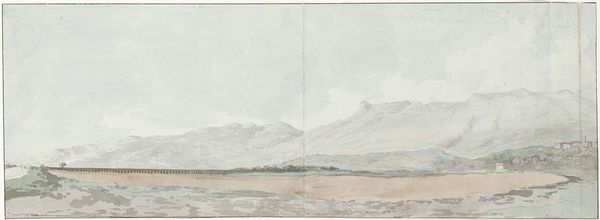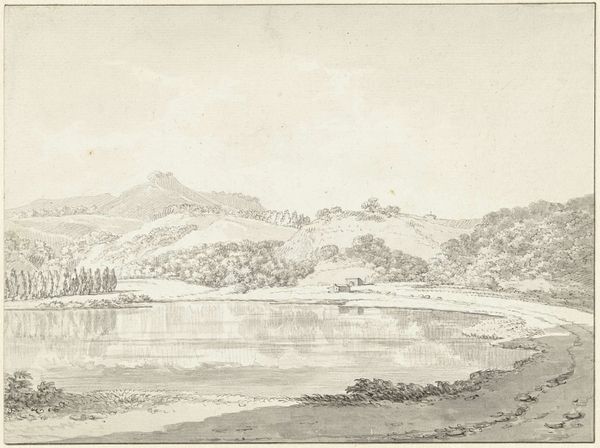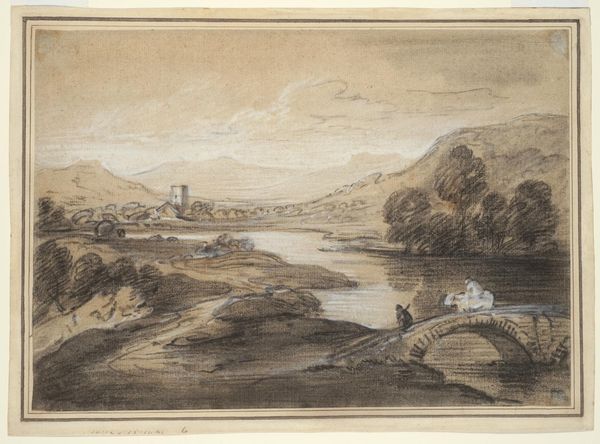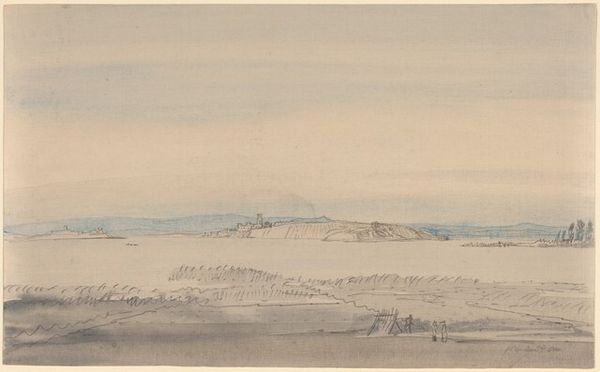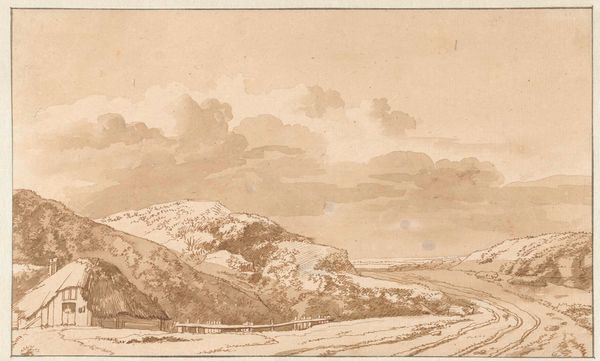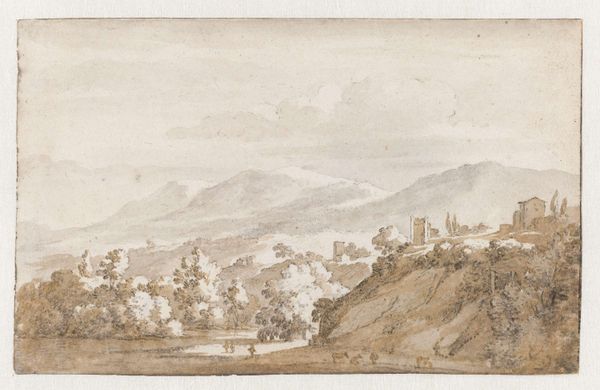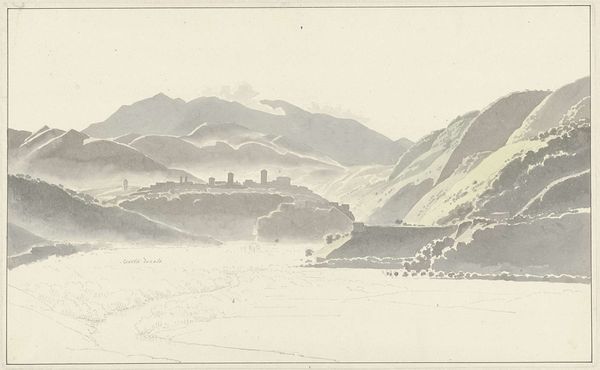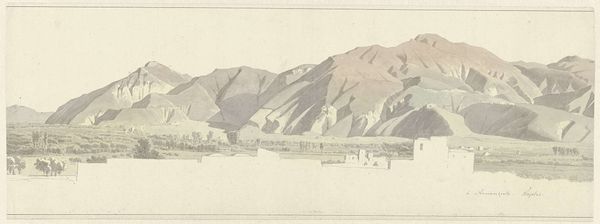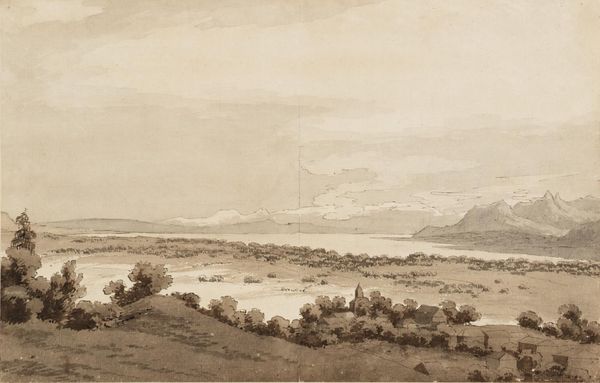
Dimensions: height 149 mm, width 812 mm
Copyright: Rijks Museum: Open Domain
Curator: Oh, this feels almost… washed out, doesn't it? Like a memory fading. Editor: Precisely! We're looking at "Panorama op Palermo met haven gezien vanaf de Monte Pellegrino," created in 1778 by Louis Ducros. It's a plein-air watercolour landscape, currently held in the Rijksmuseum. Curator: Ah, "plein-air." That adds another layer, doesn’t it? It's like Ducros was trying to capture not just the *what* but the *when* and *where* of that very specific vista. Tell me more, though, what about Palermo during that time? Editor: Palermo in 1778 was a city in transition, still grappling with its past as a multicultural hub under various rulers—Arab, Norman, Spanish. Ducros' choice to depict it from above, from the vantage point of Monte Pellegrino, speaks volumes. He frames the city, literally and figuratively, within a landscape that predates and will outlast human settlement. Think of it as a gentle critique of power, highlighting the ephemerality of human endeavors against the backdrop of the enduring natural world. Curator: And the watercolour technique really emphasizes that ephemeral quality. The delicate washes, the almost dreamlike haze… it makes the city seem almost… vulnerable. It does also remind me of Romanticism, like Caspar David Friedrich’s work that portrays nature as vast. Editor: Absolutely! Romanticism was on the rise, celebrating nature, evoking sublime feelings. But in the Sicilian context, this artistic movement took on a specific political weight, critiquing power, hierarchy and colonial legacy. How interesting is to see Palermo painted in the same years and artistic frame of reference, from very distant realities. Curator: It really puts our present in perspective. So often we perceive cities as these fixed entities, these concrete jungles… and it’s important to understand how vulnerable they actually are. Not just environmentally but socially, politically… Editor: A sentiment that perhaps is always relevant but has acquired increased urgency now. Thanks for the prompt to bring contemporary sensibilities in to dialogue with History. Curator: Exactly. Now, I see this artwork with new eyes.
Comments
No comments
Be the first to comment and join the conversation on the ultimate creative platform.
